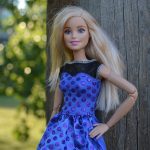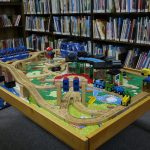When it comes to kids with special needs, we as a modern society still lack required infrastructure. A baby starts learning to use his or her basic sensory systems from birth and it continues to develop throughout the childs life.
Kids with special needs, need help to develop these and in developed part of the world there is a good infrastructure to help parents with this. Society is supportive. There are toys, games and activities designed for them.
We need to provide them with toys, activities etc which are helpful for them to develop these skills. For example an battery operated car which makes certain sound will still not really help them. They cannot see it moving. But an household item for example a glass can help them understand what that object is and why its used. So we need to question ourselves, what we give which help them develop their sensory organs!
We feel that parents of kids who are visually impaired should continuously try to learn the interest of kid, what generated his / her attention and how can they learn various things other kids do. It is a learning process for parents as well. And usage of objects around us in learning process can be very effective. Parents of such kids need to be more creative in their approach so that they can add value to their kids learning process.
While doing some more research on internet, I came across Dr. Lilli Nielsen’s Active Learning Approach, which I found very interesting and could not resist writing about it.
Dr. Lilli Nielsen was a world renowned educator of children who have visual impairment. She wrote many books on the development of children who are blind, and was best known for her work on Active Learning.
Dr. Lilli Nielsen has developed an Active Learning Approach which emphasizes the use of household items for sensory stimulation and concept development.
Active Learning is an approach shown to reach learners with the most severe disabilities, including cerebral palsy, deaf blindness and developmental delay. LilliWorks is a non-profit foundation dedicated to the Active Learning principle that “Everyone Can Learn”
You can read more at : http://www.pathstoliteracy.org/blog/lilli-nielsen-and-active-learning
Nesting Boxes
Focus: concept of large, small, nesting, stacking.
Materials needed: boxes of various sizes, with removable lids, wallpaper/construction paper in several bold colors.
How to play: Cover boxes and lids with wallpaper in matching colors (eg. large box and lid blue, smaller box and lid yellow, etc.). Activity includes finding the lid corresponding to the nesting block, stacking blocks one over another etc
Cereal Box Felt Board
Focus: vision stimulation, letters, shapes, understanding of abstract pictures.
Materials: Empty cereal box, navy blue/black and white felt (8″x12″), felt scraps in bold colors, glue
Procedure: Glue the larger felt pieces onto the box; white on one side, black/navy blue on the other. Cut the felt scraps into shapes, letters or numbers. Be sure to choose colours which will contrast with the dark or light felt colours on the box. Store pieces inside the box when not in use.
Notes: You may also use a felt-covered box to demonstrate a Braille cell. On the white felt side, use a juice can lid (from a pull-tab an which is not sharp) to trace six circles onto the felt in the pattern of a Braille cell. Use fabric paint or hot glue to make a tactile and visual outline of each circle. Glue the “scratchy” side of velcro on to the back of six juice can lids, and use them as the dots when demonstrating the patterns of Braille letters.
Scent Bottles
Focus: awareness of sense of smell, matching scents with pictures
Materials: small containers (baby food jars, M&M tubes, etc.), scented items (eg. peppermint, peanut butter, lemon, coffee, shaving cream, cinnamon, etc.), pictures of the above items.
Procedure: Place scented items in containers, and poke holes in lids. Child may smell each container, and verbally tell you what they smell, or match the corresponding picture. You may also discuss with the child where they may find these items/scents (eg. kitchen, bathroom, etc.)
Tin can wind chime
Focus: auditory awareness, localizing sound, orientation
Materials: 4 tin cans of various sizes, one end removed, and edges not sharp. string, waterproof paint in bold colors, juice can lid (no sharp edges)
Procedure: Paint each can a different colour and allow to dry. String cans in order of size, with largest at the top. Overlap cans slightly so that the cans easily bump against each other. Hang the juice can lid from the bottom end of the string. Hang wind chime outside, and keep the location consistent. Help the child to explore his surroundings and then locate the sound of the wind chimes again.
I am not an expert in this area. Above information is from my readings and research internet. However I felt compelled to compile and write about this information. You can always research more on this topic on various internet sites!
Regards,
Skumar @ natkhatduniya














Thank you so much for the great article, it was fluent and to the point. Cheers.
Great line up. We will be linking to this great article on our site. Keep up the good writing.